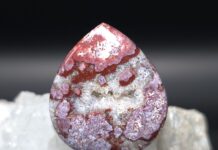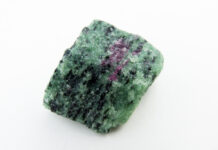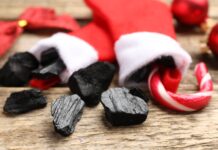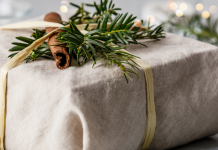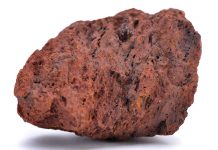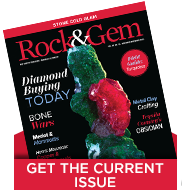
Mineral museum gifts are a way for the mineral-collecting community to support these institutions so vital to our field. Most are financed by a college, university, or government, but rarely receive sufficient funding for specimen acquisition. Private museums seem to be financially stable. A few are endowed, but in almost all cases, a museum needs public support. Some have gift shops in hopes that those profits can help the museum budget.
Think back to when you first got an interest in minerals. Like me, you may have seen your first mineral collection in a museum or university setting. In 1935, I went on a school field trip to the Yale Peabody Museum. That’s what got me started in the hobby over 80 years ago. How many current and past mineral collectors started the hobby after a museum visit?
As collectors, we all should agree that mineral displays in mineral museums are important. These museums feature fine minerals, specimens with a history, and unusual mineral oddities.
How to Support Your Local Mineral Museum
You can help mineral museums with donations, including your own collection when you can no longer care for it. But don’t expect a museum to preserve your minerals or even display them. Museums simply cannot accept donations on such terms. They have to have a free hand to keep, trade or sell donated minerals. If you want control, one sensible method is to invite a museum curator to see your collection. They can select what they need, then you can sell the rest and give the museum the money. This way, you control your minerals to the bitter end.
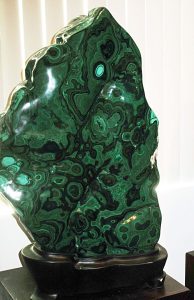
Making Personal Donations to Mineral Museums
I’ve been lucky to obtain museum-quality specimens and be able to donate them. In the halcyon days of vanadinite collecting in Arizona, I dug quantities of choice red vanadinite. I donated many to my local club and made donations to some U.S. museums. When I went to England, I always connected with Peter Embrey, curator of the Museum of Natural History, who gave generously of his time. I felt the least I could do was take a fine Arizona vanadinite to the museum as a donation. Pete was very pleased to get it, but it did not go on display. It went into the reference collection.
I’ve also been fortunate to be given some large African malachite specimens of museum quality. The understanding was that I would place them in museums, which I did. If you visit the Alfie Norville University of Arizona Gem and Mineral Museum in Tucson, you will see a really lovely cut and polished African malachite at the entrance to the Gem and Jewelry Gallery. This gorgeous malachite weighs 350 pounds. Thousands of visitors can touch and admire this lovely malachite. It is hard, so a visitor touching it can’t damage it. This is important for visitors who cannot see. They can at least get an impression of this beautiful malachite.
One of my favorite mineral museums is the Rice Northwest Gem and Mineral Museum in Hillsboro, Oregon. This museum was the private collection of Richard and Helen Rice, whom I got to know during their visits to the Tucson shows decades ago. The collection is still in their home, which is now a public museum. I was welcomed whenever I was in Oregon. I could study and photograph the superb collection.
It was only right that I donate a 270-pound natural malachite to the Rice Museum. The specimen is free-standing, about 30 inches high, and the entire natural surface shows several of the malachite’s features, various shades of green, a varied surface of botryoidal, smooth, rough, and velvety forms of malachite. The piece is ideal for display in a museum. We arranged to transfer this beauty from Scottsdale to Tucson one year, as the Rice Museum curator always has a display in the show. We met him there, and three of us struggled to move the piece from one car to the other so the malachite could go to its new home.
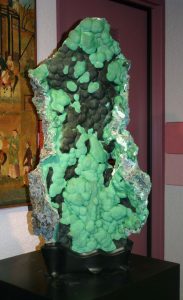
Mineral Museums Across Arizona
There are several museums in Arizona that have mineral displays. The two largest are the University of Arizona and the newly renovated State Museum in Phoenix, now being managed by the University of Arizona. We also have a fine museum that just opened, the Pima County Geology and Mineral Museum in Casa Grande, about halfway between Tucson and Phoenix. A visit is worth your time. It is housed in two rooms of an old school just off the main avenue in Casa Grande.
Casa Grande is so named because of an ancient Native American ruin, a tall multi-story building constructed thousands of years ago by people of uncertain origin. The farming and ranching town of
Casa Grande grew up nearby and now has a nice, small but actively growing mineral museum thanks to my friend Dr. Ray Grant and a ton of volunteers. Exhibits have been donated by local clubs and collectors.
The Mineralogical Society, the oldest in the state, has its fine collection on display in the Pima County Museum. I donated the display case to the Society for this use. The collection is rich in Bisbee minerals.
Emerald Displays at the Pima County Mineral Museum
When we talk about emeralds, we think of Russia and Colombia, which have produced the finest green gems. We seldom hear about an unusual deposit of metamorphic schist in Brazil. This is a solid, black rock shot through with emerald crystals. Some are as long as your arm and thicker. Why don’t we see quantities of gem emeralds from this market? Because they are not gemmy. The beauty is in the scattered and visible green emerald crystals that are exposed by carving. These unusual gem carvings are quite popular.
It happens, I came into possession of two such emerald carvings. One of the carvings sits on a table and is a little over 100 pounds. It features a group of carved heads in a line clustered above a rock shot through with small green emerald crystals. The green crystals are obvious and this carving seemed ideal for a museum so we donated it to the Pima County Museum in Casa Grande, Arizona, where it sits atop a nice piece of wooden furniture.
I hope this column encourages you to consider helping your local mineral museum. Supporting these museums is vital to the growth and education of our hobby.
This story about museum gifts previously appeared in Rock & Gem magazine. Click here to subscribe! Story by Bob Jones.


